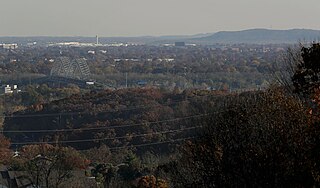
Floyd County is a county located in the U.S. state of Indiana. Its county seat is New Albany. The population of the county was 80,484 as of the 2020 United States Census. Floyd County has the second-smallest land area in the entire state. It was formed in the year 1819 from neighboring Clark and Harrison counties.

New Albany is a city in Floyd County, Indiana, United States, situated along the Ohio River, opposite Louisville, Kentucky. The population was 37,841 as of the 2020 census. The city is the county seat of Floyd County. It is bounded by I-265 to the north and the Ohio River to the south, and is considered part of the Louisville, Kentucky Metropolitan Statistical Area. The mayor of New Albany is Jeff Gahan, a Democrat; he was re-elected in 2023.

William Henry Vanderbilt was an American businessman and philanthropist. Known as "Billy," he was the eldest son of Commodore Cornelius Vanderbilt, an heir to his fortune and a prominent member of the Vanderbilt family. Vanderbilt became the richest American after he took over his father's fortune in 1877 until his own death in 1885, passing on a substantial part of the fortune to his wife and children, particularly to his sons Cornelius II and William. He inherited nearly $100 million from his father. The fortune had doubled when he died less than nine years later.
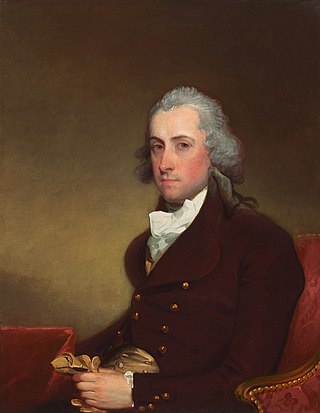
Stephen Van Rensselaer III was an American landowner, businessman, militia officer, and politician. A graduate of Harvard College, at age 21, Van Rensselaer took control of Rensselaerswyck, his family's manor. He developed the land by encouraging tenants to settle it and granting them perpetual leases at moderate rates, which enabled the tenants to use more of their capital to make their farms and businesses productive.

Culbertson Mansion State Historic Site is located in New Albany, Indiana by the Ohio River. It was the home of William Culbertson, who was once the richest man in Indiana. Built in 1867 at a cost of $120,000, this Second Empire-style mansion has 25-rooms within 20,000 square feet (1,900 m2), and was completed in November 1869. It was designed by James T. Banes, a local architect. Features within the three-story edifice include hand-painted ceilings and walls, frescoed ceilings, carved rosewood-grained staircase, hand painted floors, wall-to-wall carpeting, marble fireplaces, wallpaper of fabric-quality, and crystal chandeliers. The original tin roof was imported from Scotland. The displays within the mansion feature the Culbertson family and the restoration of the building. The rooms on the tour are the formal parlors, dining rooms, bedrooms, kitchen, and laundry room.
David Richard Floyd-Jones was an American lawyer and politician.
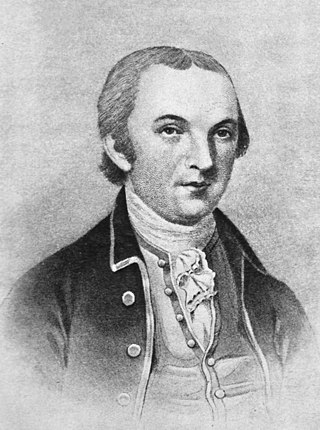
John Cochran was the 4th Surgeon General of the United States Army during the American Revolution. He was president of the Medical Society of New Jersey from 1769 to 1770, and was re-elected in 1770 and served until 1771.

The Mansion Row Historic District is a national historic district located at New Albany, Indiana. It features some of the various mansions of the city when New Albany was the largest city in Indiana around the time of the American Civil War. The main section is on Main Street from State Street, to 15th Street. A smaller section is on Market Street from E. 7th Street to E. 11th Street.

Simeon Kalfius Wolfe was an American lawyer and politician who served two terms as a U.S. Representative from Indiana from 1873 to 1875.

New Albany Township is one of five townships in Floyd County, Indiana. As of the 2010 census, its population was 49,252 and it contained 22,226 housing units.
Davis Floyd was an Indiana Jeffersonian Republican politician who was convicted of aiding American Vice President Aaron Burr in the Burr conspiracy. Floyd was not convicted of treason however and returned to public life after several years working to redeem his reputation. He lost his wealth in the Panic of 1819 and died in obscurity in Florida 1834.

Cornelia "Nellie" Cole Fairbanks was the wife of Charles W. Fairbanks, the 26th vice president of the United States. During her husband's tenure she held the unofficial position of the second lady of the United States from 1905 to 1909. She was a leader in the women's suffrage movement and considered a pathfinder to politics for American women in the 20th and 21st centuries.
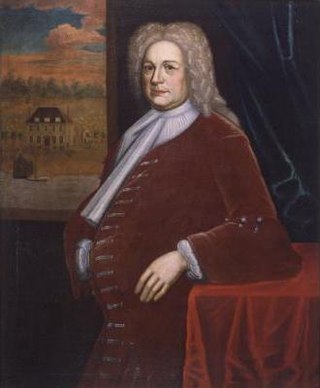
Arent Philipse Schuyler was a member of the influential Schuyler family. He was a surveyor, Native American trader, miner, merchant, and land speculator.
F. Shirley Wilcox was a politician and government official who served as Indiana's 39th State Treasurer.

Lyman Skinner Ayres I was the founder of L. S. Ayres and Company, a regional department store chain whose flagship store and headquarters were located in Indianapolis, Indiana. The L. S. Ayres and Company name remained in use for 132 years.
Adrian Georg Iselin was a New York financier who invested in and developed real estate, railroads, and mining operations. For many years during his early business career he was engaged in importing with his brother, William Iselin, being one of the most successful merchants of New York in the middle of the century. After retiring from the importing trade, he established the banking house of Adrian Iselin & Co. He is considered the founder of the Iselin family in the United States.

Alexander Dowling was a justice of the Indiana Supreme Court from January 2, 1899 to January 2, 1905.
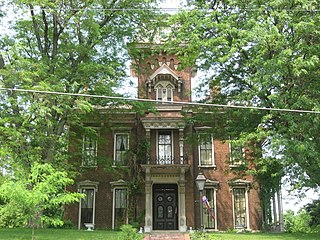
Judge Cyrus Ball House, also known as the Ball Mansion and Carriage House, is a historic home located at Lafayette, Tippecanoe County, Indiana. It was built in 1868–1869, and is a two-story, Second Empire style brick dwelling, with a three-story mansard roofed entrance tower. It sits on a limestone foundation, has intricate wood and stone detailing, and a slate roof. Also on the property is a contributing two-story, rectangular carriage house.

Stephen Van Rensselaer, known as the "Young Patroon" and sometimes the "last of the patroons" was the last patroon of Rensselaerswyck.
















